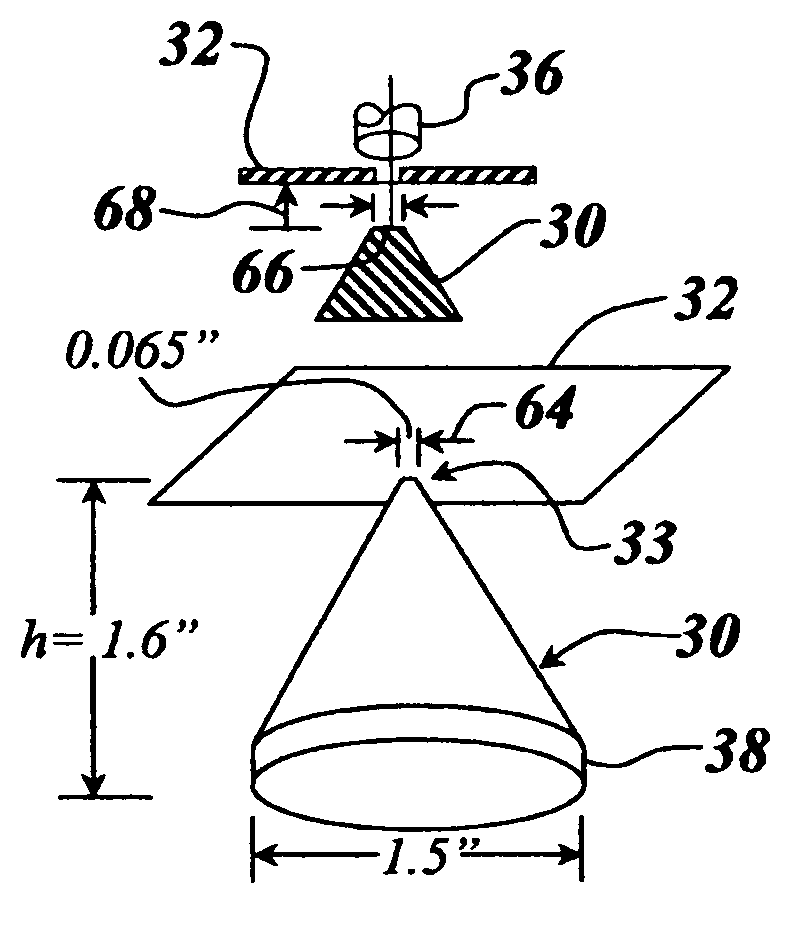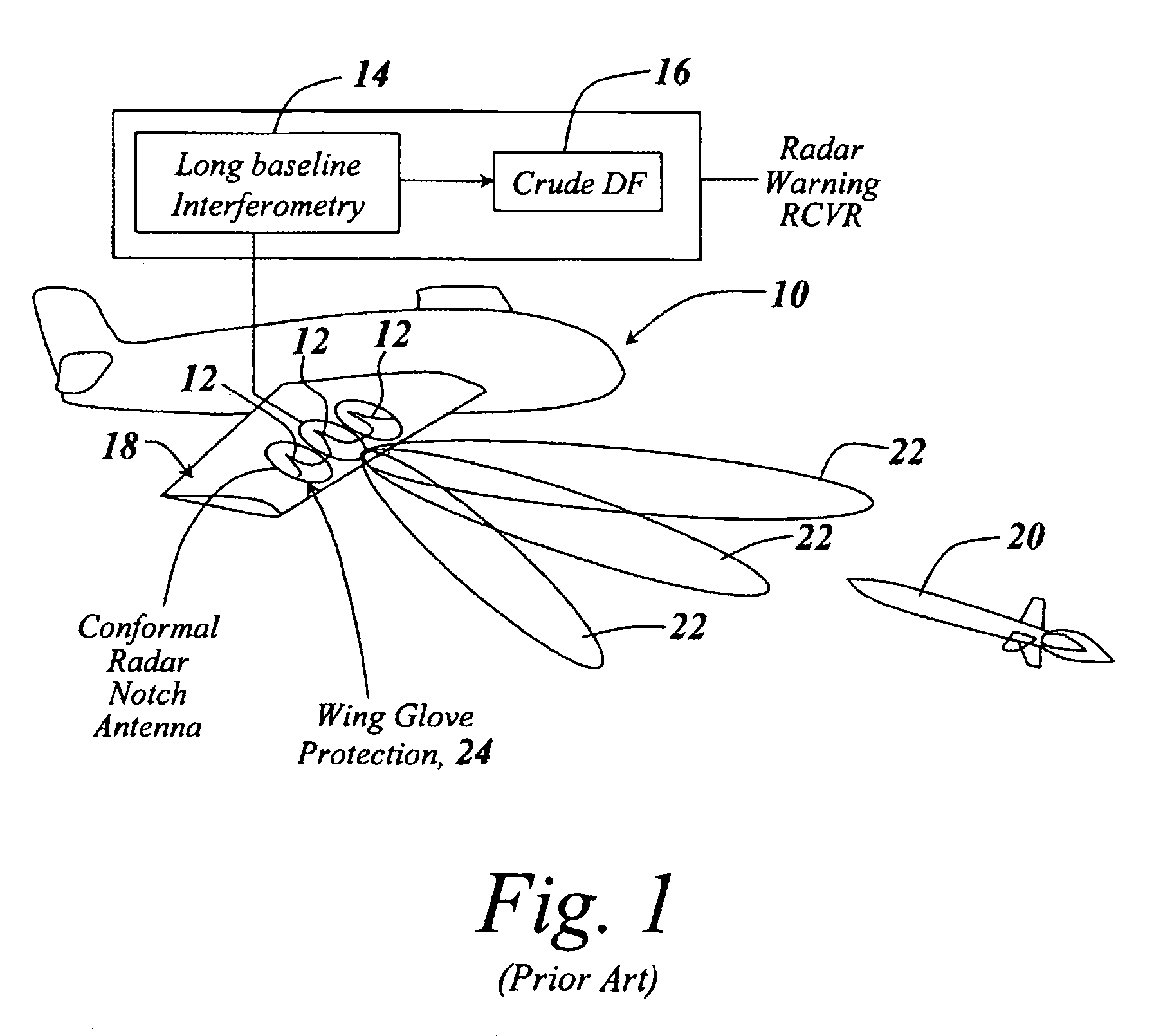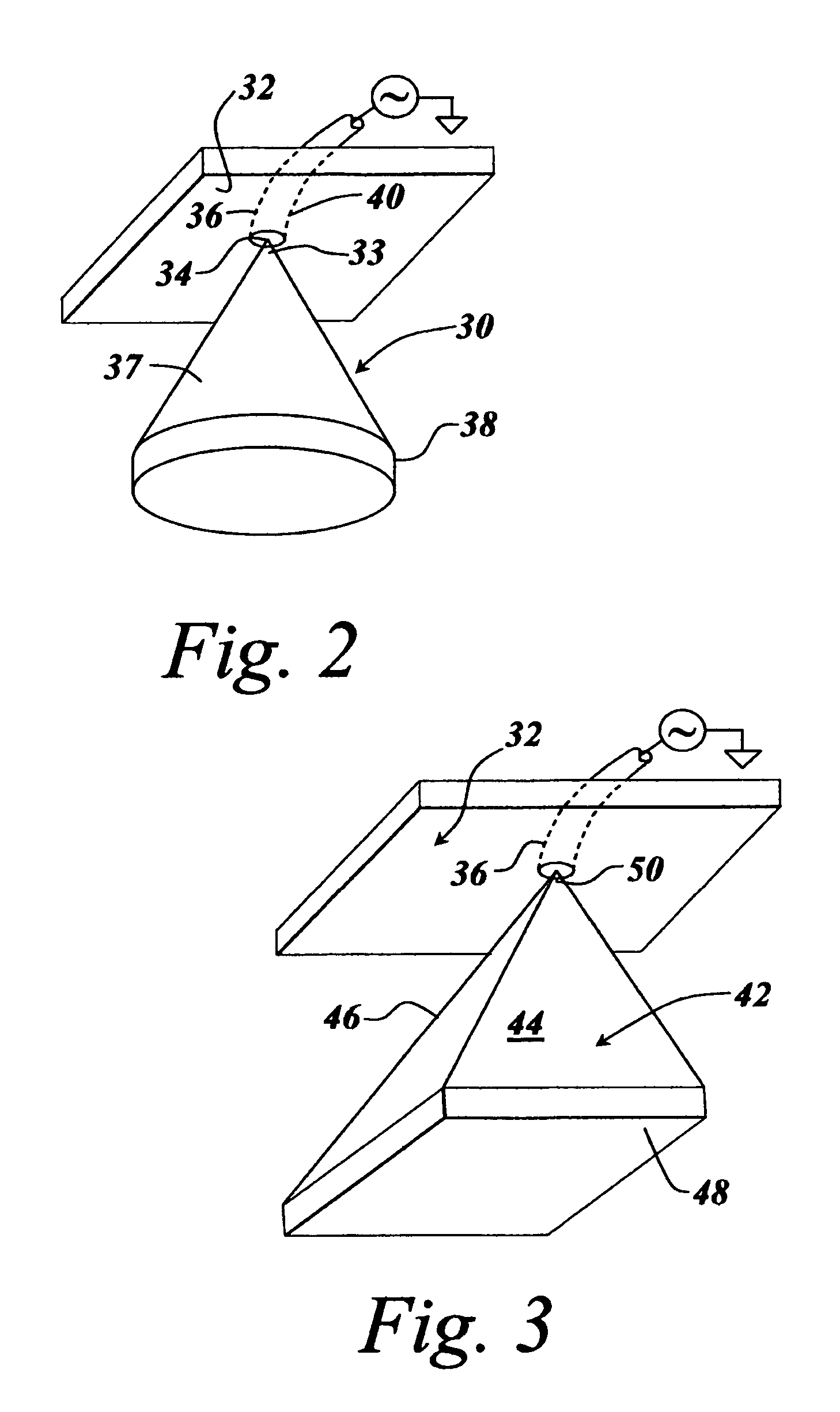Compact low RCS ultra-wide bandwidth conical monopole antenna
a conical monopole antenna, ultra-wide bandwidth technology, applied in the direction of individual energised antenna arrays, resonant antennas, elongated active element feeds, etc., can solve the problems of insufficient gain across the entire bandwidth of the conical monopole antenna, preventing its use as an antenna, and unfavorable detection of dipole patterns. , to achieve the effect of low cost and high gain
- Summary
- Abstract
- Description
- Claims
- Application Information
AI Technical Summary
Benefits of technology
Problems solved by technology
Method used
Image
Examples
Embodiment Construction
[0033]Referring now to FIG. 1, an aircraft 10 in the past has been provided with Vivaldi notch or slot antennas here illustrated at 12 which are coupled to a long-base interferometry detection unit 14 which outputs a crude direction finding output at 16 indicating the direction of a source of microwave energy impinging on wing 18.
[0034]The microwave energy can come from an on-board radar for an incoming missile 20 which utilizes its radar to search out a target aircraft when the missile is at some distance from the aircraft. It is the purpose of the long baseline interferometric system to determine the direction from which the missile is coming.
[0035]Note that with Vivaldi notch antennas, used primarily because of their ultra-wide bandwidth, their main lobes 22 are highly directional, especially at the higher frequencies, making omnidirectional use impractical.
[0036]Moreover, in terms of mounting the notch or slot antennas to the wing of an aircraft, it will be appreciated that the ...
PUM
 Login to View More
Login to View More Abstract
Description
Claims
Application Information
 Login to View More
Login to View More - R&D
- Intellectual Property
- Life Sciences
- Materials
- Tech Scout
- Unparalleled Data Quality
- Higher Quality Content
- 60% Fewer Hallucinations
Browse by: Latest US Patents, China's latest patents, Technical Efficacy Thesaurus, Application Domain, Technology Topic, Popular Technical Reports.
© 2025 PatSnap. All rights reserved.Legal|Privacy policy|Modern Slavery Act Transparency Statement|Sitemap|About US| Contact US: help@patsnap.com



